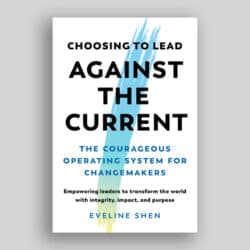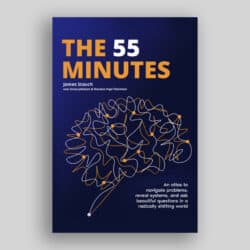The Givers: Wealth, Power and Philanthropy in a New Gilded Age, by David Callahan, New York, Knopf, 2017, ISBN 978-1-101-94705-0
All eyes are on Washington, DC, these days as we watch the latest confrontations and debates among the political power brokers in the Trump Administration and Congress. The Trump election and presidency has provoked closer coverage and perhaps higher public awareness of who has power and who doesn’t in DC than we have seen for some years. Canadians are paying closer attention too. We are riveted by what is being debated in Washington (think the North American Free Trade Agreement (NAFTA), refugee policy, tariff walls, and belligerent foreign policy, among other issues). But are we distracted by this spectacle from focusing on the ways in which power is being wielded increasingly by players outside the political arena in the United States? The argument of The Givers, a new book by David Callahan, is that another important power game is being played in the US and it isn’t politicians who are playing it, but philanthropists.
Callahan sets out to profile major living donors in US philanthropy. And his aim is not historical or even simply journalistic. A trained political scientist, Callahan is fascinated by the wielding of power. His central argument is that wealthy donors are deploying their wealth and the power it gives them in unprecedented ways to shape US society. In his view, “no explanation of who runs America will be complete if it doesn’t reckon with the rise of big philanthropy – and the givers behind it.”
His bold argument is that philanthropy, as expressed though the actions of the major givers, is set to surpass government in its ability to shape society’s agenda. This is an extraordinary statement. And, although Callahan provides numerous examples of major philanthropic investments, it is not entirely convincing. While his stories of how the new donors are deploying their assets for social good are compelling, and the questions that he raises about this unaccountable philanthropic power are legitimate and relevant, he does not entirely prove his case that philanthropic power equals political power.
Callahan’s approach to his material is to profile the key players in this new world of “big” philanthropy. It should be noted, as he does, that his focus is strictly on the work of major US givers of the 21st century. In that sense, this is a context-bound and time-limited analysis, which leaves aside the different ways in which private philanthropy plays out in other Western democracies, including Canada. Arguably, he is examining a phenomenon that has neither fully taken shape nor run its course. It may be early to pass judgement on the impact of this philanthropic spending on US democracy and public life. Nevertheless, Callahan raises some pertinent questions, which should provoke reflection in us all.
Callahan develops his argument about the influence of the new philanthropy of big donors by defining what constitutes power: the ability to shape public policy through ideas, and the ability to shape civic life through communities. Through multiple detailed examples and stories about the philanthropic investments of the givers (including both individuals and foundations) Callahan proceeds to flesh out his case for their growing power. His is a familiar analysis of the forces that have created room for this new power. Government in the United States over the last decades has stepped back as fiscal pressures increase. In this space, philanthropy steps forward. Economic growth, market capitalism, the rise of the new technological elite, fiscal policies that enable the accumulation of wealth – all have produced immense fortunes held in the hands of individuals, many at very young ages. And these fortunes are being dedicated to making change, funding breakthroughs, influencing public policy and attacking complex issues such as education reform, climate change, and criminal justice reform, not to mention the ways in which public policy itself are shaped through the contributions of think tanks and even more activist advocacy organizations.
Callahan is particularly interested in the entrepreneurs, the catalysts, and the disrupters as he calls them, such as Gates, Zuckerberg, Moskovitz, and Parker, but he does not neglect the “old guard,” such as Buffet, Bloomberg, Soros, and the Koch brothers. As a side note, he does include one big Canadian “giver,” Jim Balsillie, but otherwise ignores Canadian philanthropists. In a remarkably comprehensive tour of 21st century “big” new US philanthropy, he discusses individual personalities, their families, and their philanthropic organizations across the ideological spectrum, as well as the origins of their wealth, without neglecting the rise of female givers and the development of millennial heirs. He puts a spotlight on the varied strategies that the new givers have adopted, including the building of evidence-based policy centres, investing in litigation, and obtaining social policy change through court rulings, supporting public benefit journalism, creating networks, and catalysing movements. This is by no means the traditional philanthropy of arms-length grants made by anonymous or remote foundations. On the contrary, Callahan gives proof that this group of givers are engaged, impatient, and committed to direct action in many cases.
Therein lies the dilemma. To whom are these ambitious givers accountable? Should an ever larger and richer upper class be able to amplify its influence through giving when it already has too much clout, asks Callahan? His concerns are sharpened by the degree to which the givers he profiles go beyond philanthropy. As a political scientist, he is acutely interested by the ways in which these donors influence policy debate and direct action through advocacy platforms and direct funding, or indeed direct challenges to government. However, although he charts numerous and certainly significant philanthropic investments in key areas such as education (US charter schools for example), he doesn’t prove his case that the givers have become truly significant power-brokers. He refers to many of them as the new Medicis. Until they combine their wealth with real political power, it is not clear that they are going to rival the combined financial and political power of government itself. That said, there is no doubt that in the absence of other mechanisms for enforcing accountability, public oversight of the givers is important.
To address his concern that private funders are increasingly choreographing public life, and eroding civic equality, Callahan proposes a few counter measures: more enforced transparency such as full disclosure of donors by the recipient organizations; reclassification of primarily advocacy organizations as non-charities (or removal of their tax-receipting privileges); strengthened oversight possibly from a new US office of charitable affairs outside the IRS; and solutions that more directly pertain to foundations such as more participatory grant-making and more effort to create more diverse and inclusive boards of foundations.
Ultimately, Callahan concedes that the most important solution to rebuilding civic capacity and democracy in America, and to balancing the powers of “benign plutocracy,” is to rebuild a better financed, more nimble, responsive, and effective public sector. In this, Callahan would join with Canadian opinion leaders, including many private foundations, who believe that an effective public sector working in collaboration with a strong non-profit sector, including philanthropy, and with key businesses in our country, is the best answer to the power imbalances brought about by economic inequality, concentration of wealth, and social exclusion. This may seem like a pipe dream in the context of today’s dysfunction and ideological polarization in America, but as Canadians we have an opportunity to realize it in our own democratic society, perhaps with the help of our own “givers.”


